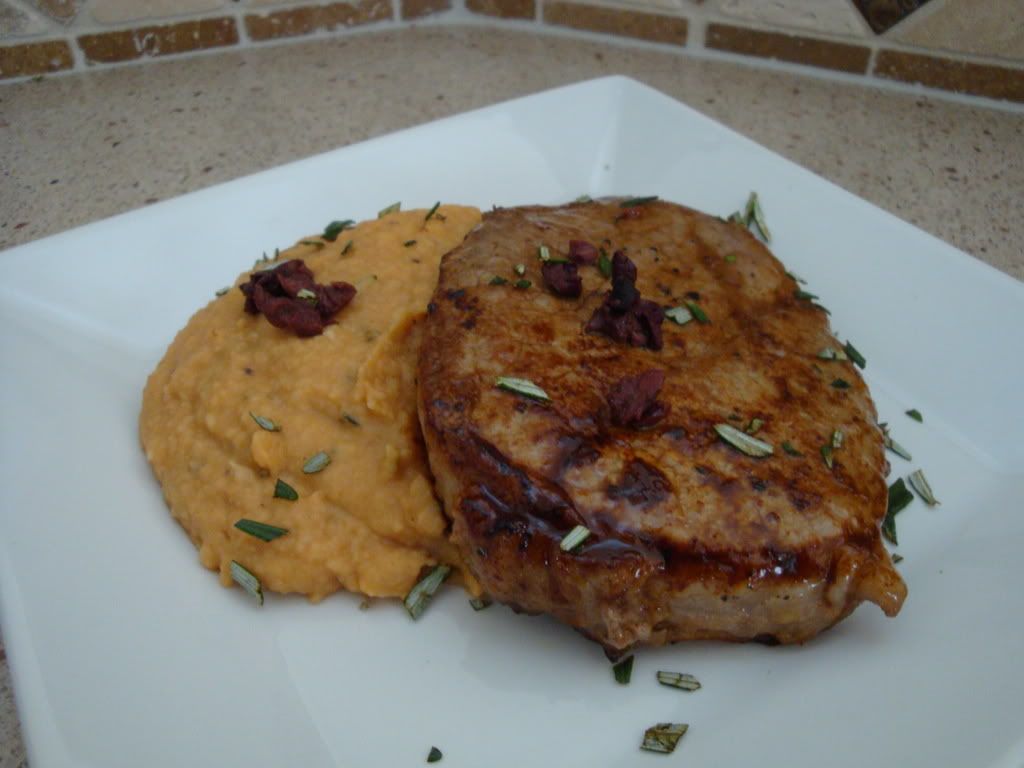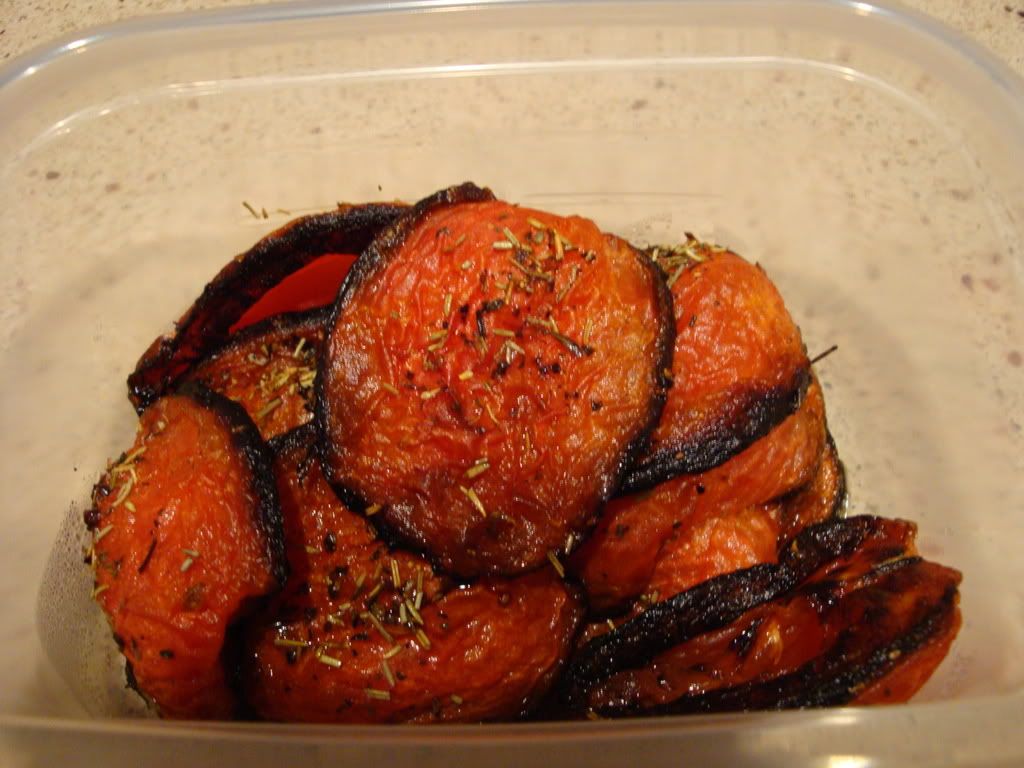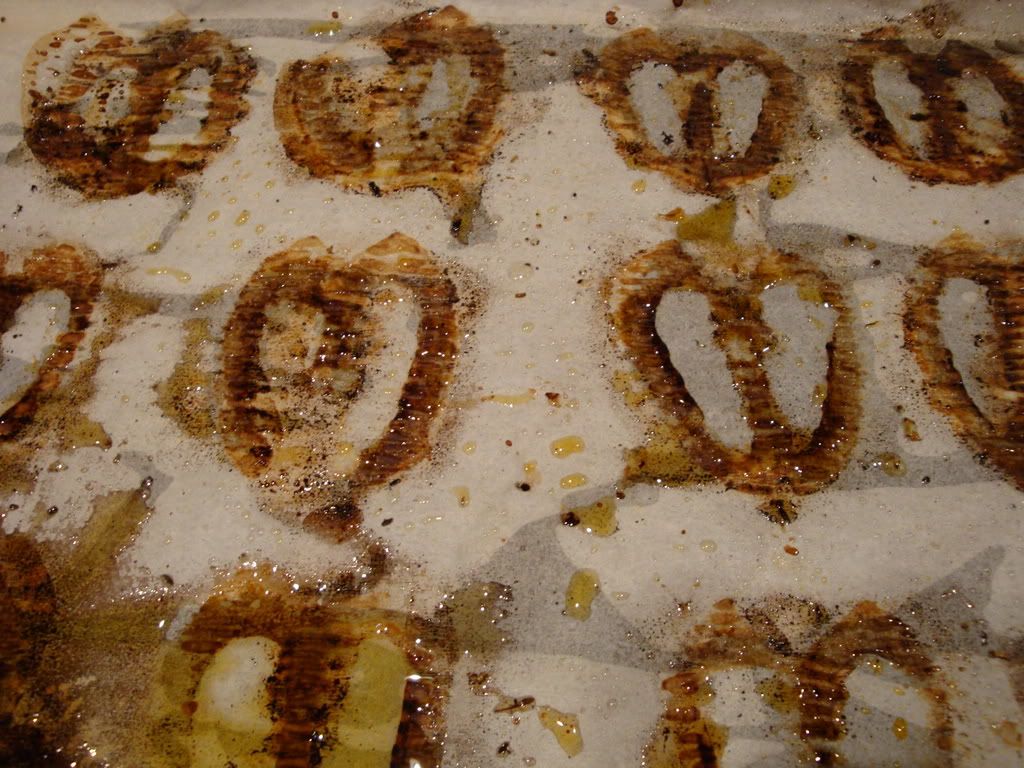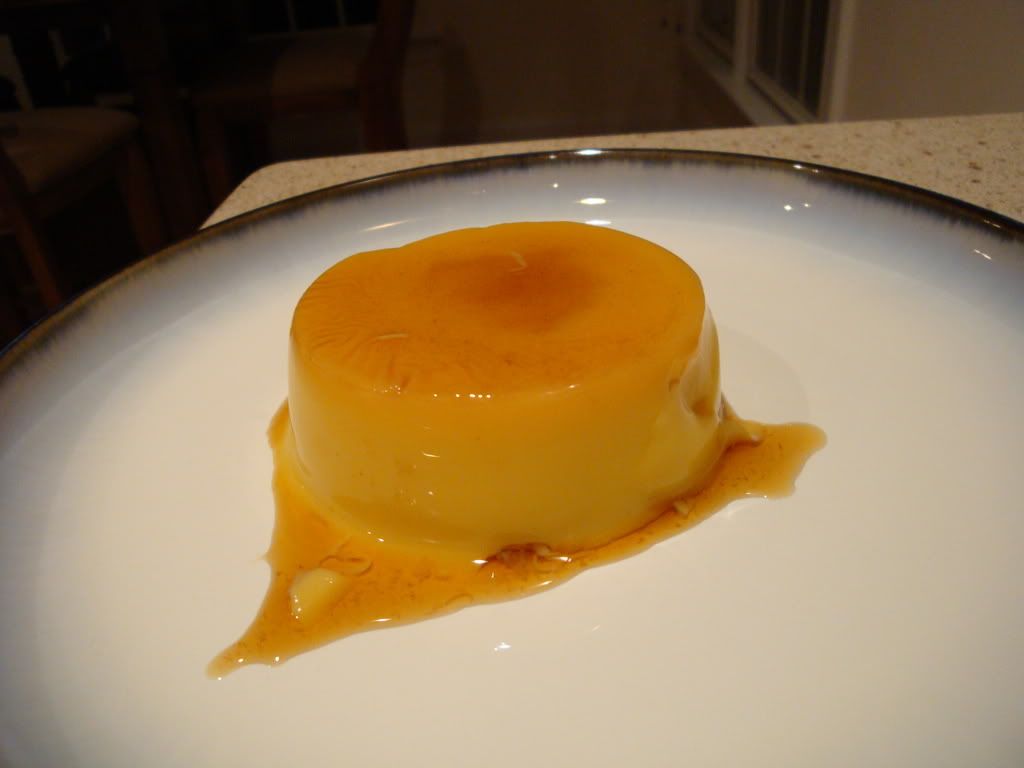
I'd heard of making a puree of cannellini beans, which sounded quite good, so I gave it a shot with this Gourmet magazine recipe. Briefly, you puree the beans with garlic, chicken stock, olive oil, salt and pepper. Then you cook the steaks and, after removing them from the pan, you cook rosemary, tomato paste and white wine in the pan to deglaze. You then mix in the bean puree with some chopped kalamata olives. The beans turned out smooth with enough stock and oil to prevent grittiness, and the subtle flavors of the rosemary, tomatoes and white wine gave it an extra boost to pair well with the steak.
For the next dish, I had to roast some veggies, including some tomato confit:


You may remember tomato confit from my cooking class outside of Cannes this summer. Here is what I made at home, using herbes de Provence on top. The second picture is what was left after I removed the tomatoes. These shadows looked a little like hearts - both the idealized heart shape and an actual heart (though only with two chambers).


I also roasted some zucchini, mushrooms and red onion, but the main feature of this dish that I was making was the polenta. Polenta is made from cornmeal in a fashion similar to grits, but with some definite differences, mostly in that it is made with milk or cream and Italian spices.
1 clove garlic, minced
1T olive oil
2 cups milk
2 cups water
1 cup cornmeal
0.5 cup Parmesan
1T basil, chopped
1T thyme, chopped
Cook garlic in olive oil in a saucepan. Stir in milk and 1 cup of water and bring to boiling. In a small bowl, combine cornmeal with remaining water. Slowly add cornmeal mixture to the hot milk mixture and return to boiling. Reduce heat to low and cook uncovered for 5-10 minutes, stirring frequently, until polenta has thickened. Stir in cheese, spices and salt to taste. The polenta comes out creamy, slightly cheesy and an excellent substitute for other carbohydrates. It does solidify markedly once it has been refrigerated, just to be warned. I topped the polenta with the roasted vegetables and topped it with some more cheese.


I totally phoned it in on this dessert. I was looking at various Jell-o puddings when I saw they had their version of flan, a Spanish custard and caramel dessert. At 80 calories a serving, I thought I would give it a shot. The process is very easy and it only took about 5 minutes to put it all together (plus refrigeration time). The flan comes out of the mold easily, though the one in the picture had a few chips out of it. While it did not set up like a real flan and was not quite as creamy, it was still a good low-cal substitute nonetheless.

Lastly, near Raleigh is a huge Asian market. While there, we found some frozen durian. For those who haven't heard, durian is most famous for its pungent odor. Most of what I had heard was that it smelled atrocious, but tasted great. My Malaysian friend who was with me said as much as well. This one had been deseeded, so it was a bit soft. I had wondered how something could smell like one thing and taste totally different (your senses of taste and smell are connected), and it turns out that this fruit both smelled and tasted like feet smothered in cheese and onions. I could not bring myself to eat more than one bite of the fruit as it was so powerful. My Malaysian friend, however, picked up the slack and ate the rest with great relish. I wonder if this has anything to do with a socialization of taste/smell...darn, science always surfaces in my mind. I would recommend everyone to try durian if they have the chance, just beware and have something ready to help eradicate the taste from your mouth.
No comments:
Post a Comment